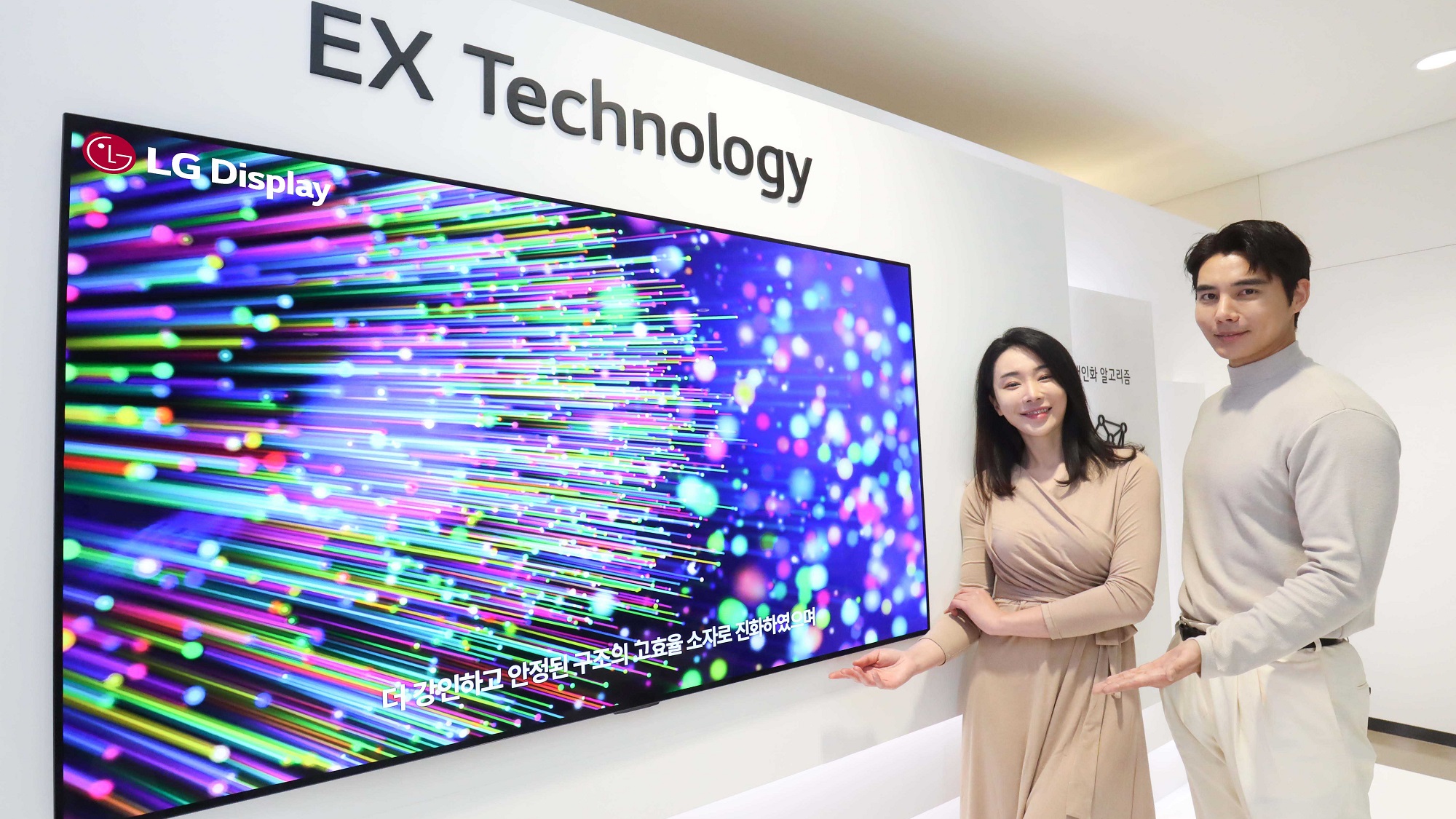
If the best OLED TVs have any fault, it’s that they don’t get as bright as the top-tier LED-LCD TVs like Samsung’s QLED TV lineup. But that’s something everyone is interested in changing.
Key to that happening are a new breakthrough from the Universal Display Company (UDC), the main supplier of OLED panels to LG Display, BOE and Samsung Display, who say that it’ll soon be transitioning from a fluorescent blue OLED backlight to a phosphorescent one and the introduction of something called micro lenses.
According to the UDC via Korea's ETNews, current-generation blue fluorescent OLEDs only have around 25% of the efficiency of phosphorescent ones and, thanks to a new breakthrough, it can finally make them and can start selling them next year.
Once they become available to manufacturers like LG Display and Samsung Display, those panels will make their way into LG and Samsung TVs and you’ll probably start seeing them on store shelves as early as 2024.
The science behind brighter OLED TVs
As FlatpanelsHD explains it, “Red and green OLEDs in displays have already transitioned to phosphorescence (PHOLED) which has up to 100% internal luminous efficiency”, but blue OLEDs? Well, those have been a tough nut to crack and remain fluorescent for now.
One of the issues with phosphorescent blue OLEDs up to this point is that they have a shorter shelf life. They don’t last as long as blue fluorescent OLEDs, and that’s what's prevented the major manufacturers from integrating them into the latest OLED panels.
The technology that Universal Display Company (UDC) is working on would change that. The result would lead to brighter OLED TVs with reduced power consumption and with a shelf life that's comparable to the fluorescent OLEDs we have in OLED TVs now.
Sign up to get the BEST of Tom's Guide direct to your inbox.
Get instant access to breaking news, the hottest reviews, great deals and helpful tips.
Of course, that's just one bit of the puzzle.
The other technology that could help are micro lenses that would be applied to the existing OLED TV panels that are in production now. LG Display is currently investigating this route and its early findings suggest that we could see a brightness of up to 20% (around 1200 nits) in the next OLED panels.
This wouldn’t be the first time we would see micro lenses — as some outlets have suggested that they’re in use by Samsung in the Samsung Galaxy S21 Ultra.
We’re hoping that we’ll see these technologies coalesce in future OLED TVs from LG as well as the new QD-OLED TVs from Samsung and Sony…though it probably won’t be anytime in the next few months.
In the meantime, check out the LG B2 OLED TV, which just got a $300 price drop for the holidays.

Nick Pino heads up the TV and AV verticals at Tom's Guide and covers everything from OLED TVs to the latest wireless headphones. He was formerly the Senior Editor, TV and AV at TechRadar (Tom's Guide's sister site) and has previously written for GamesRadar, Official Xbox Magazine, PC Gamer and other outlets over the last decade. Not sure which TV you should buy? Drop him an email or tweet him on Twitter and he can help you out.
